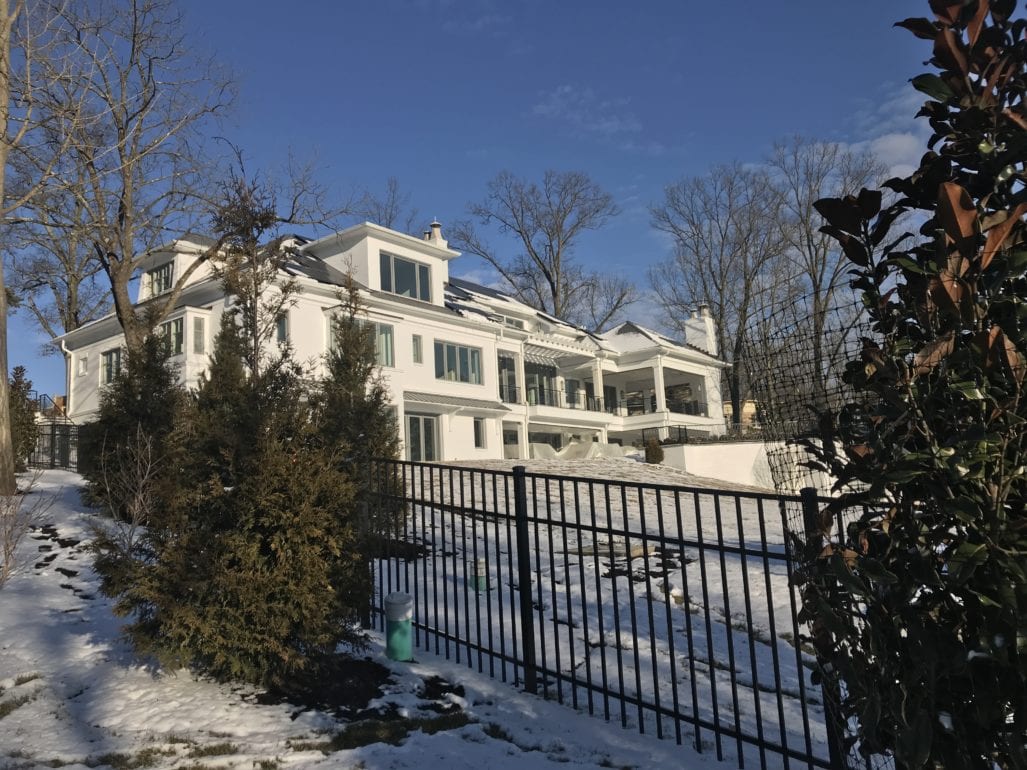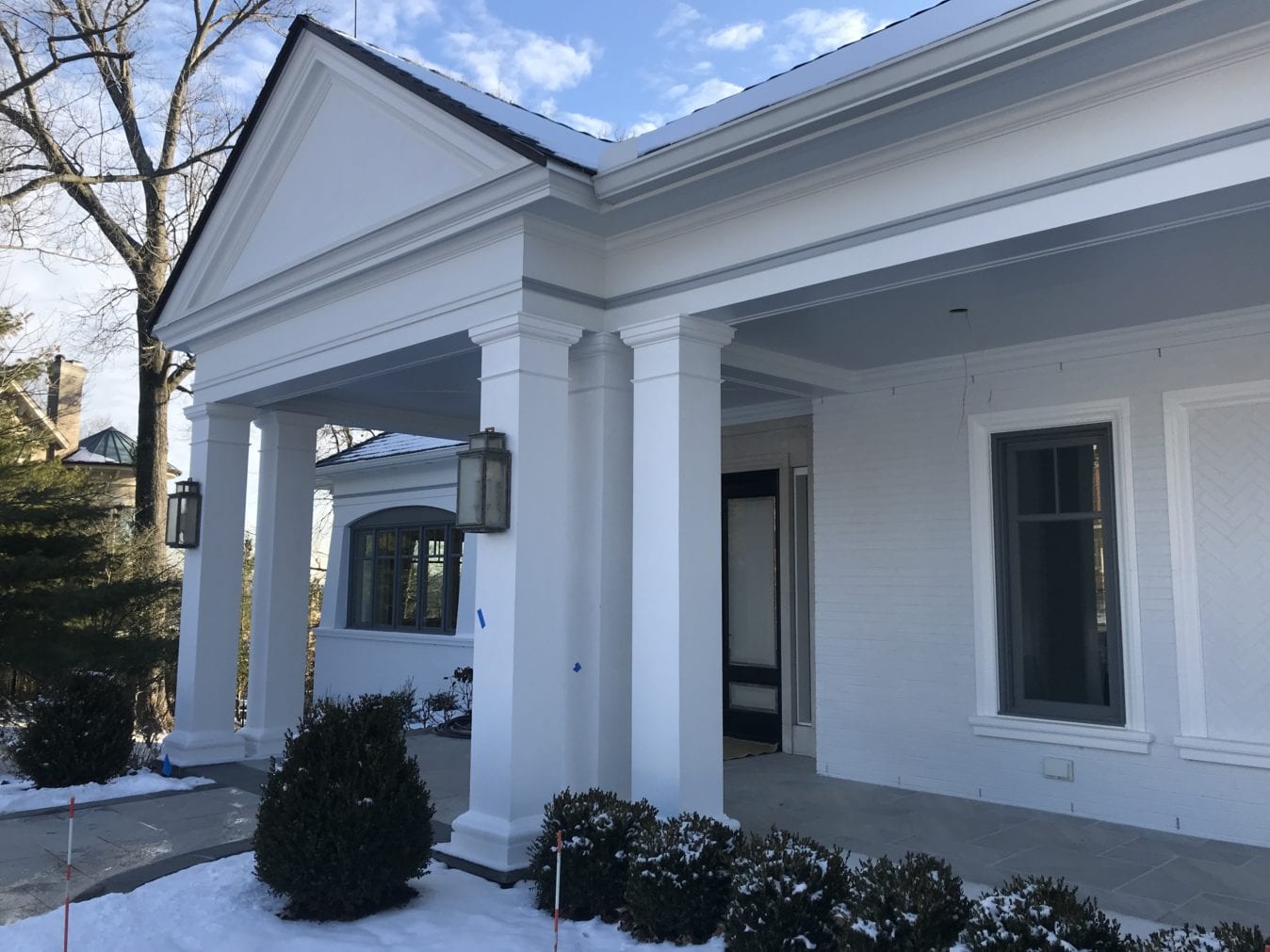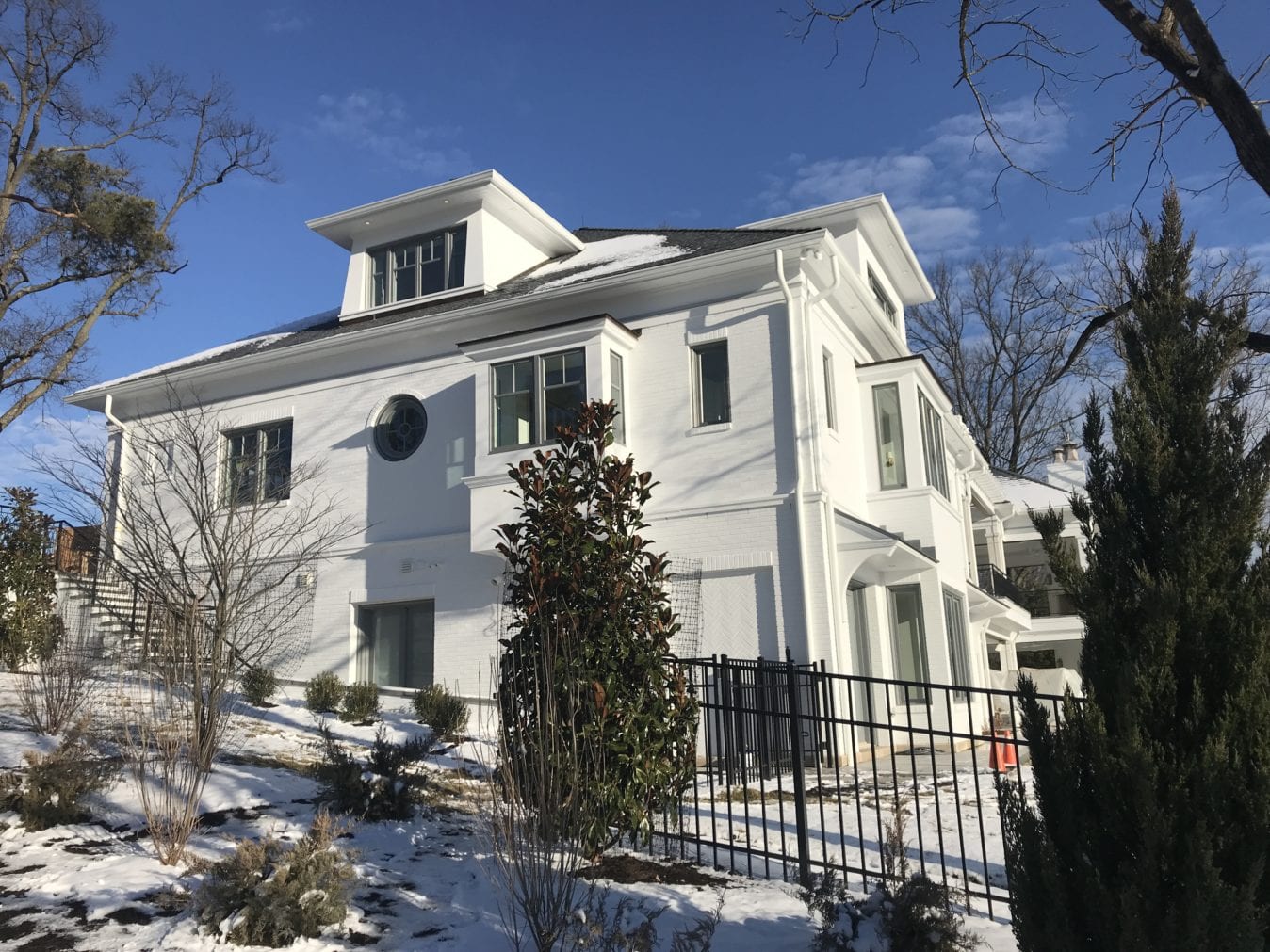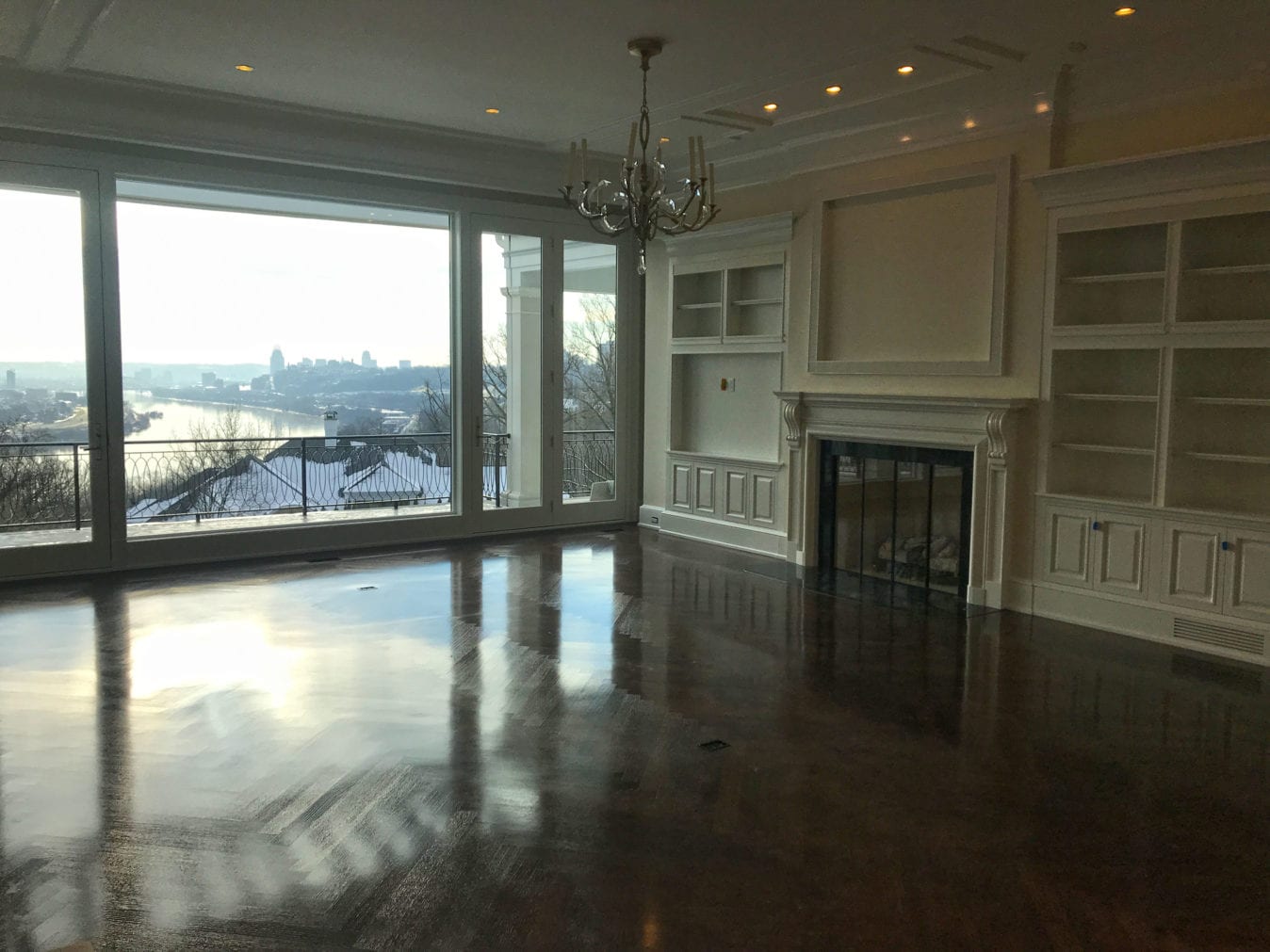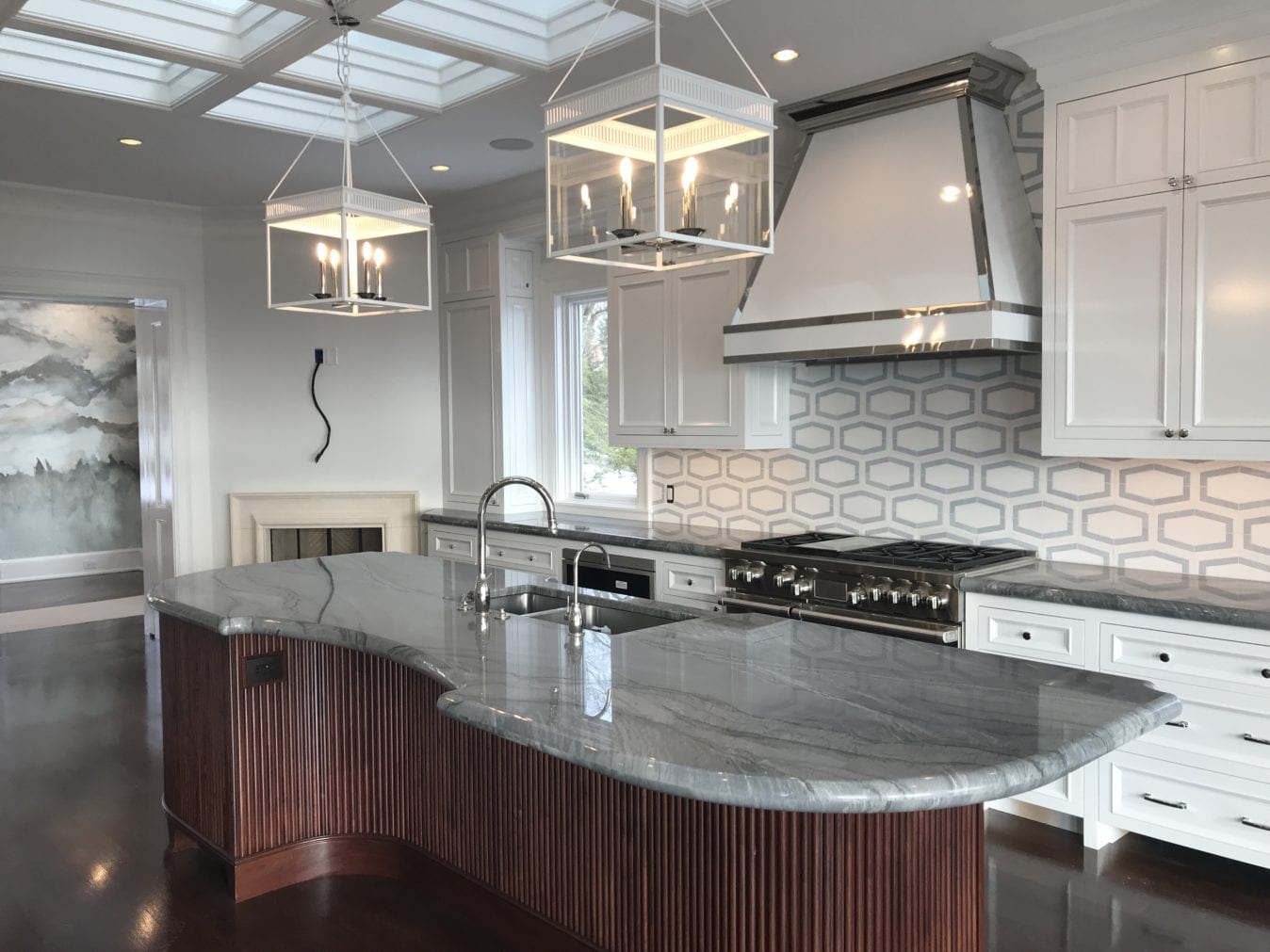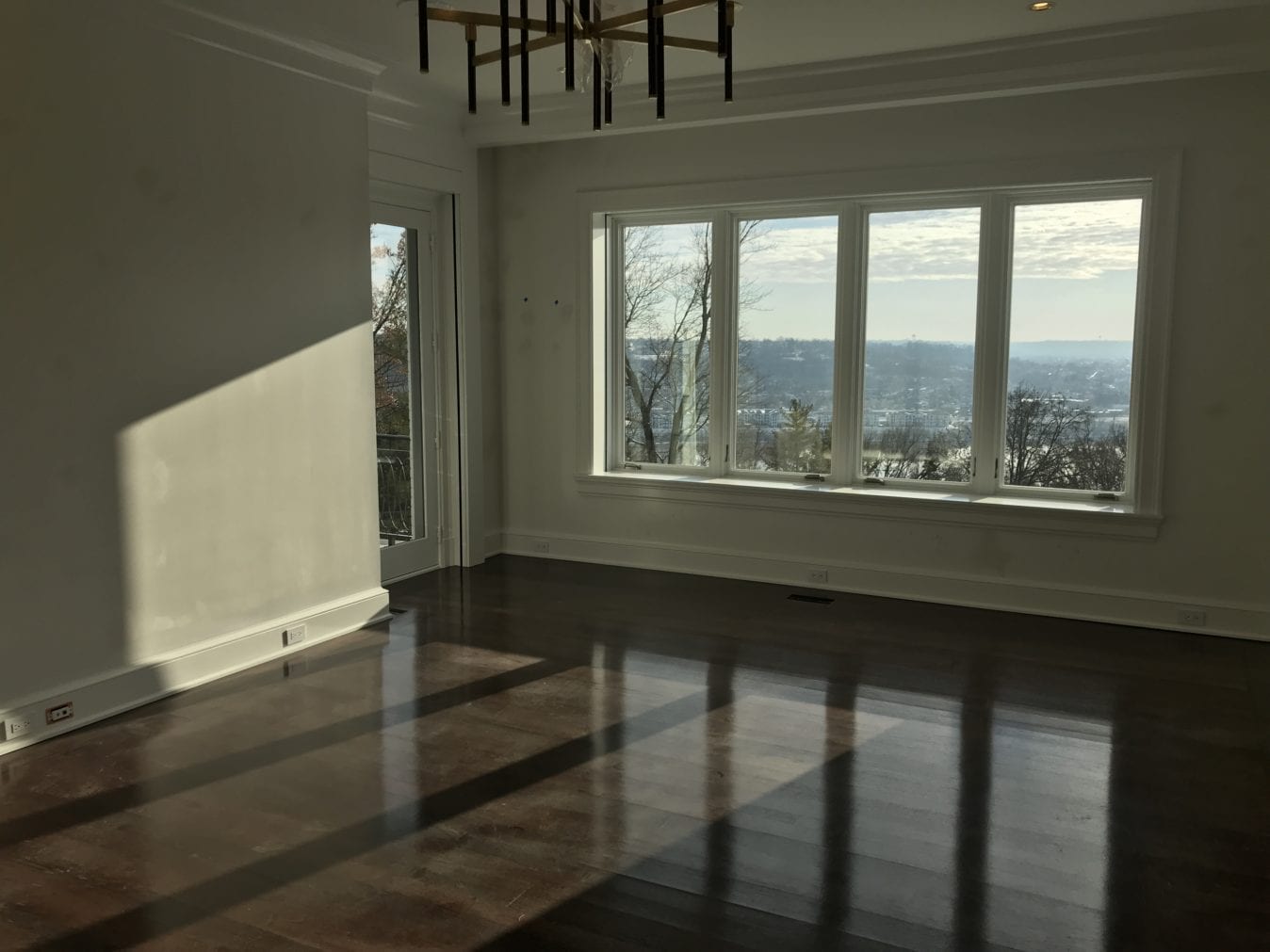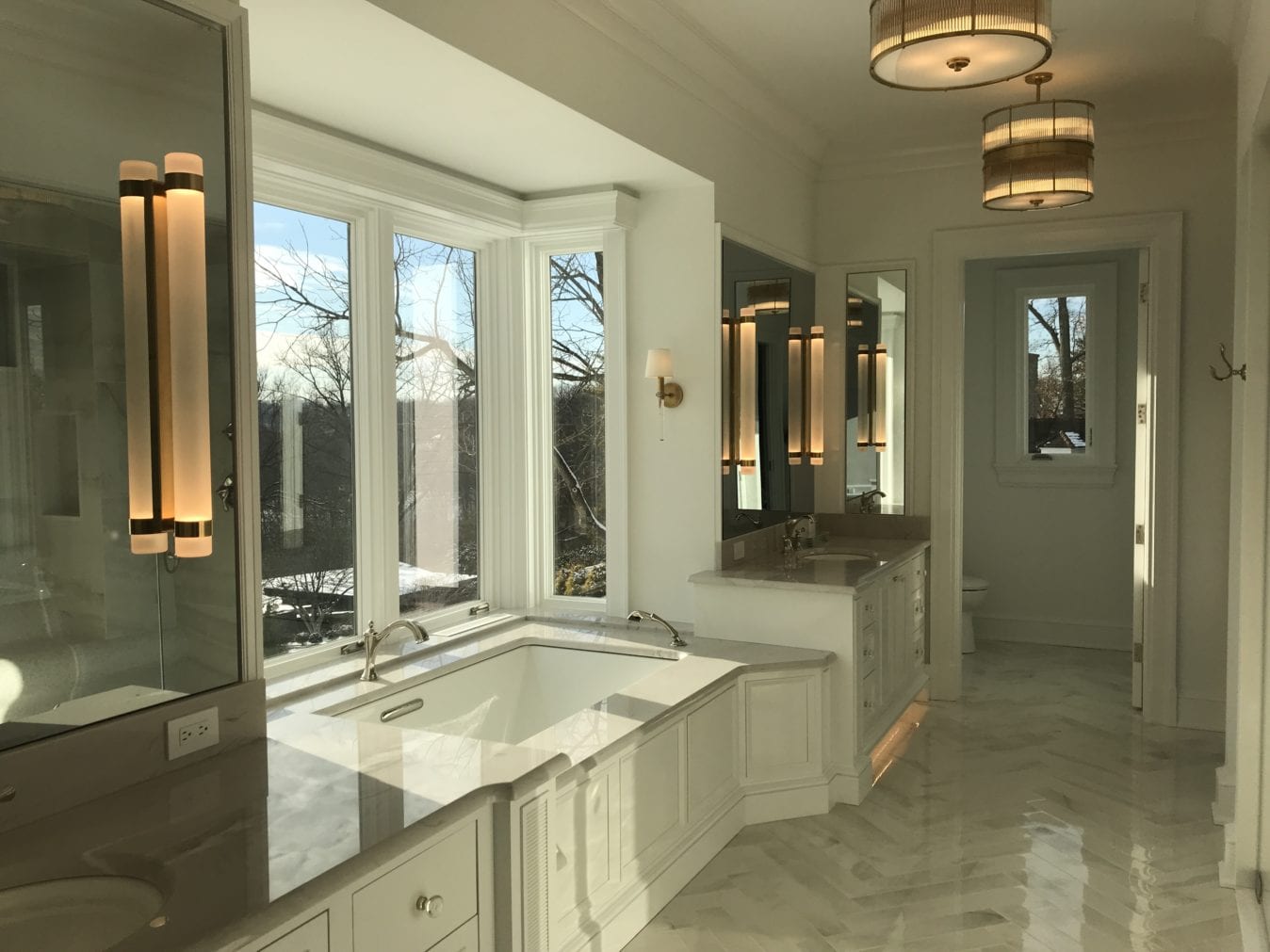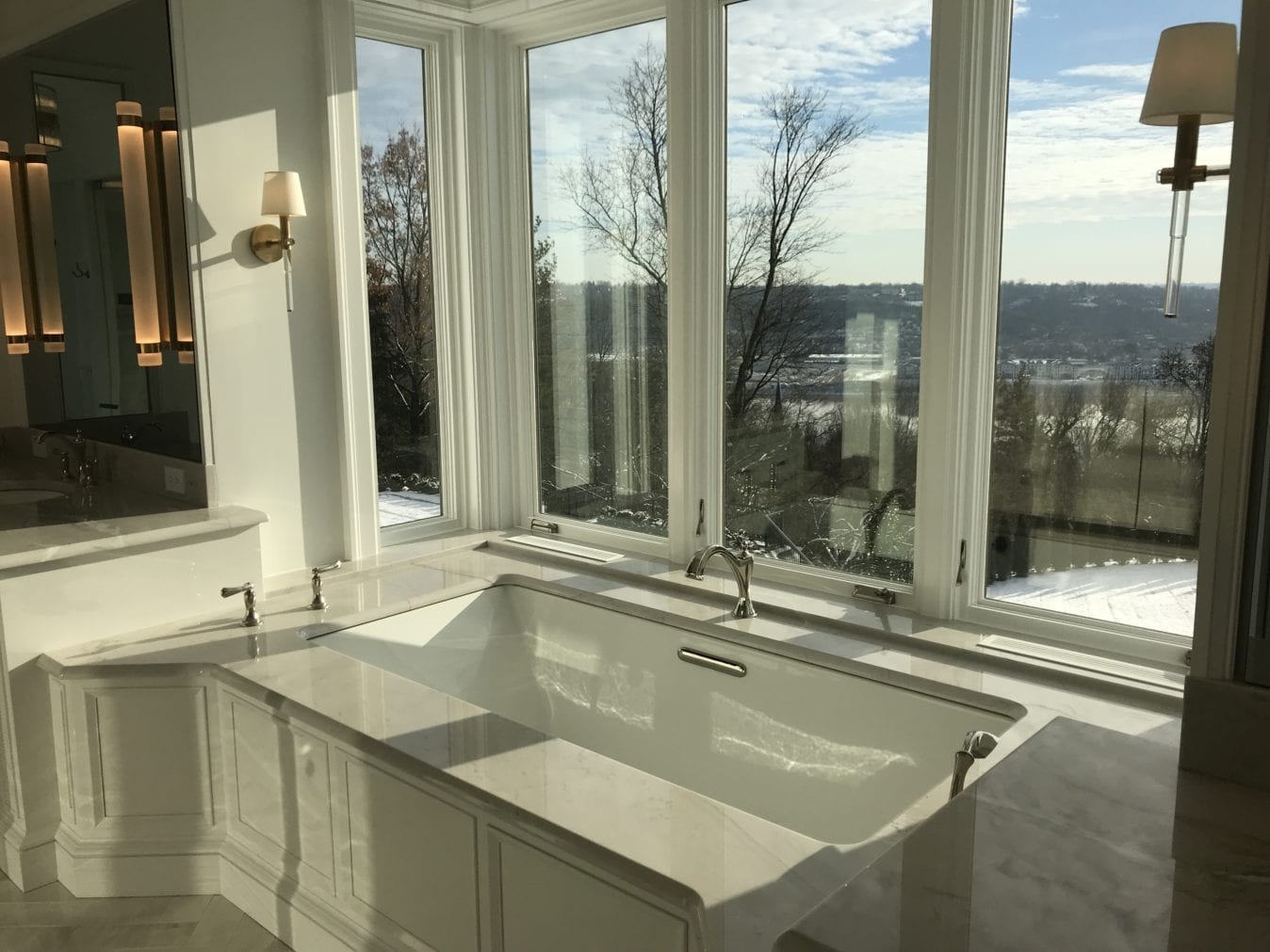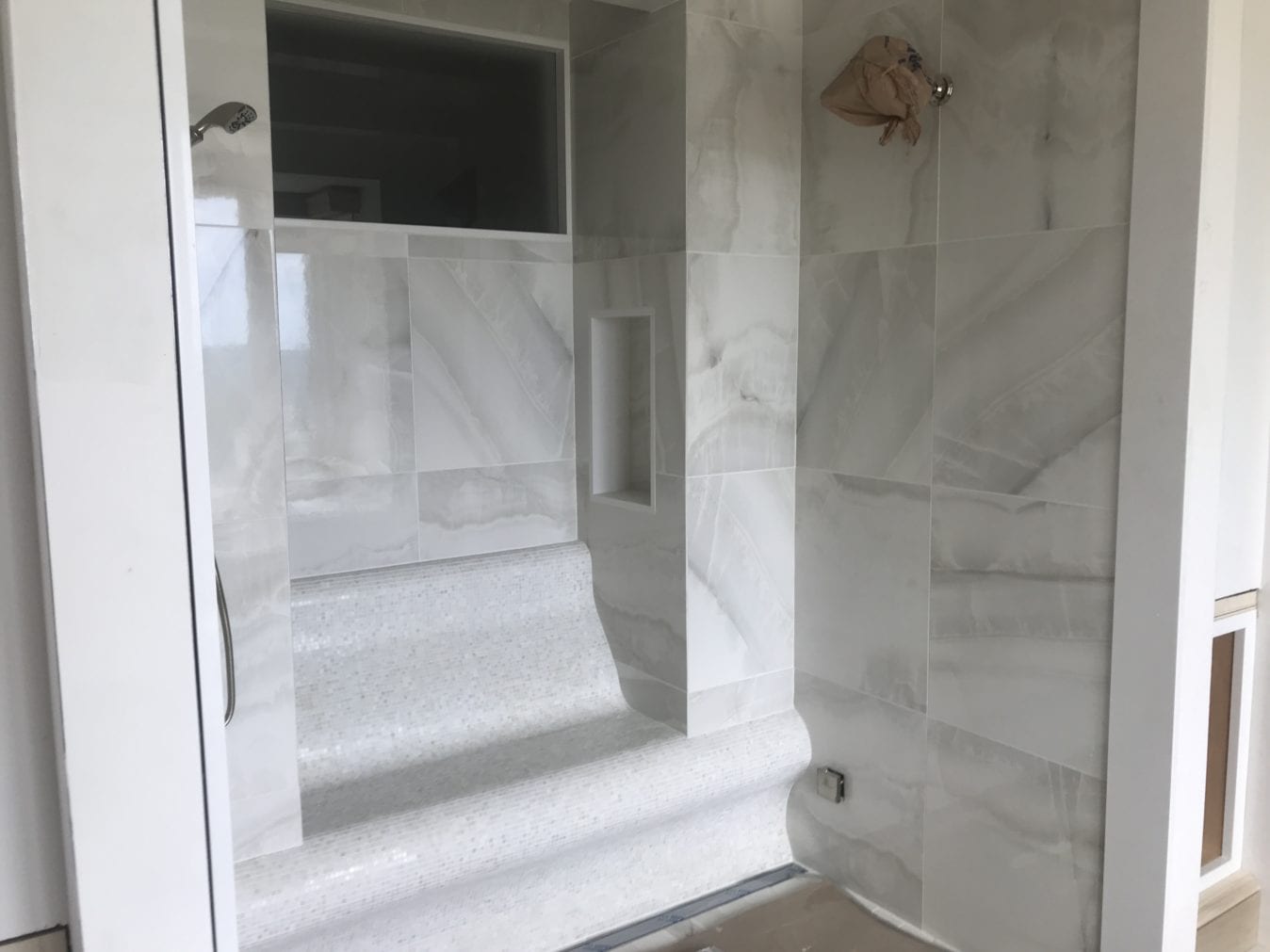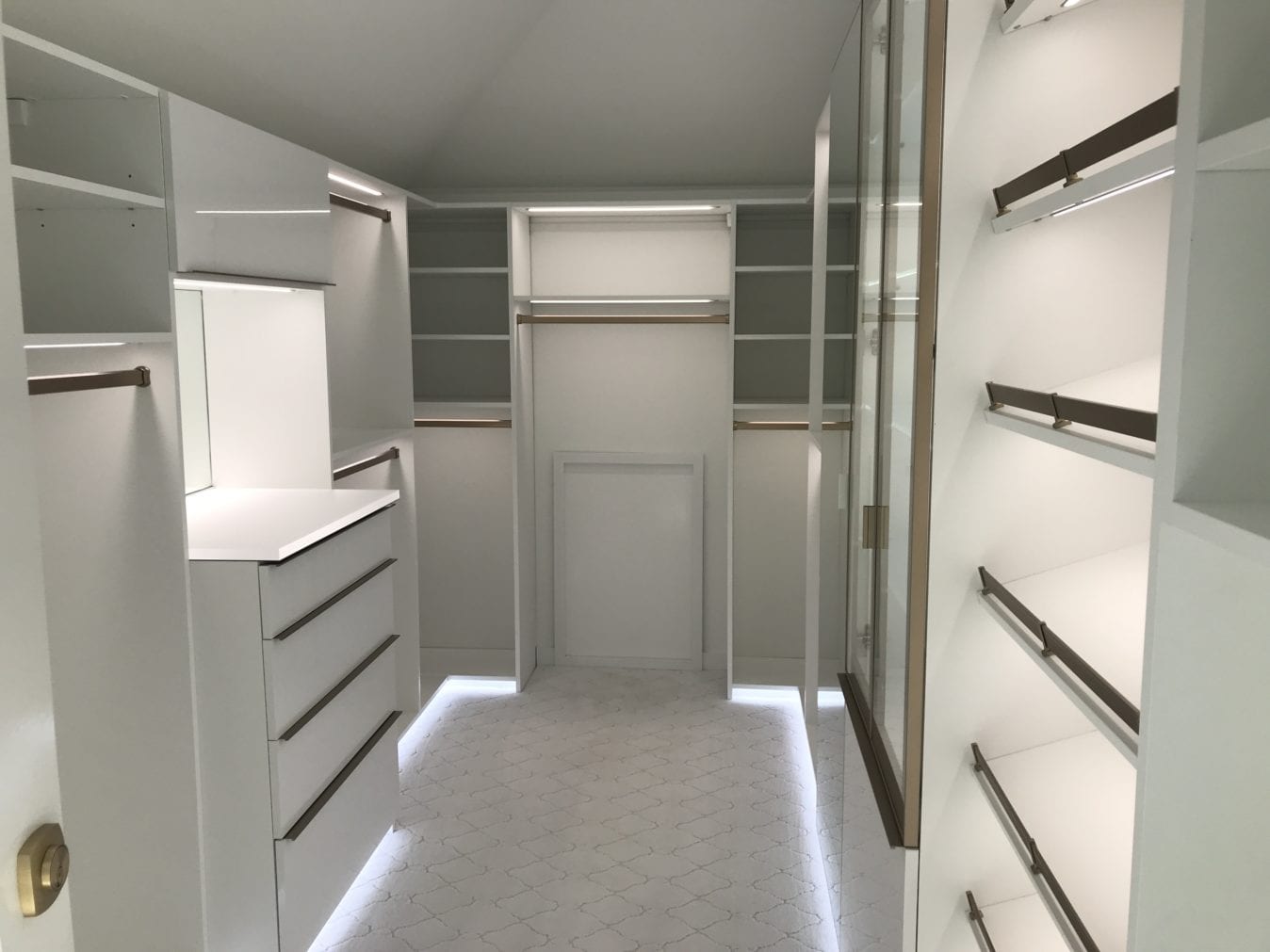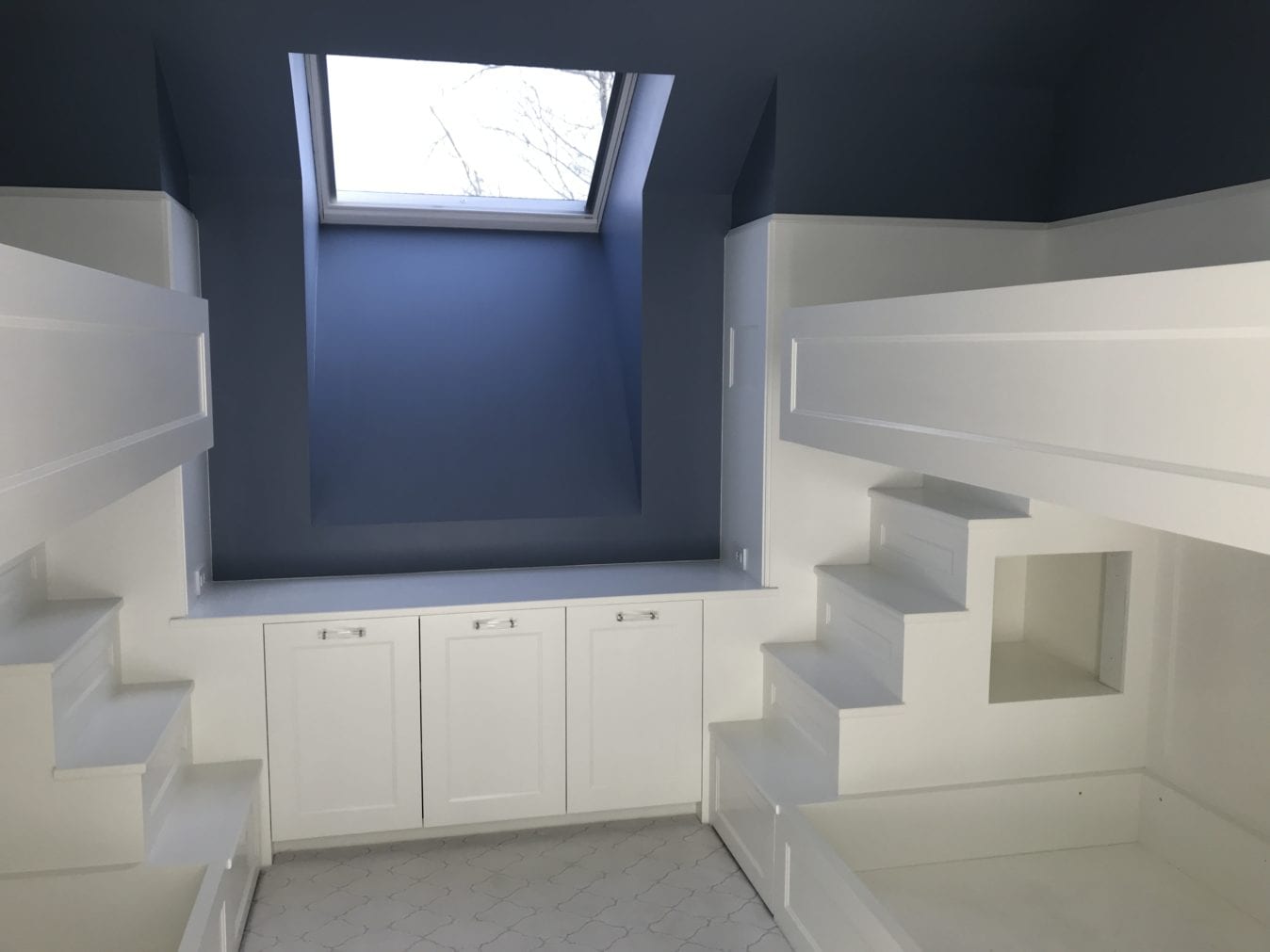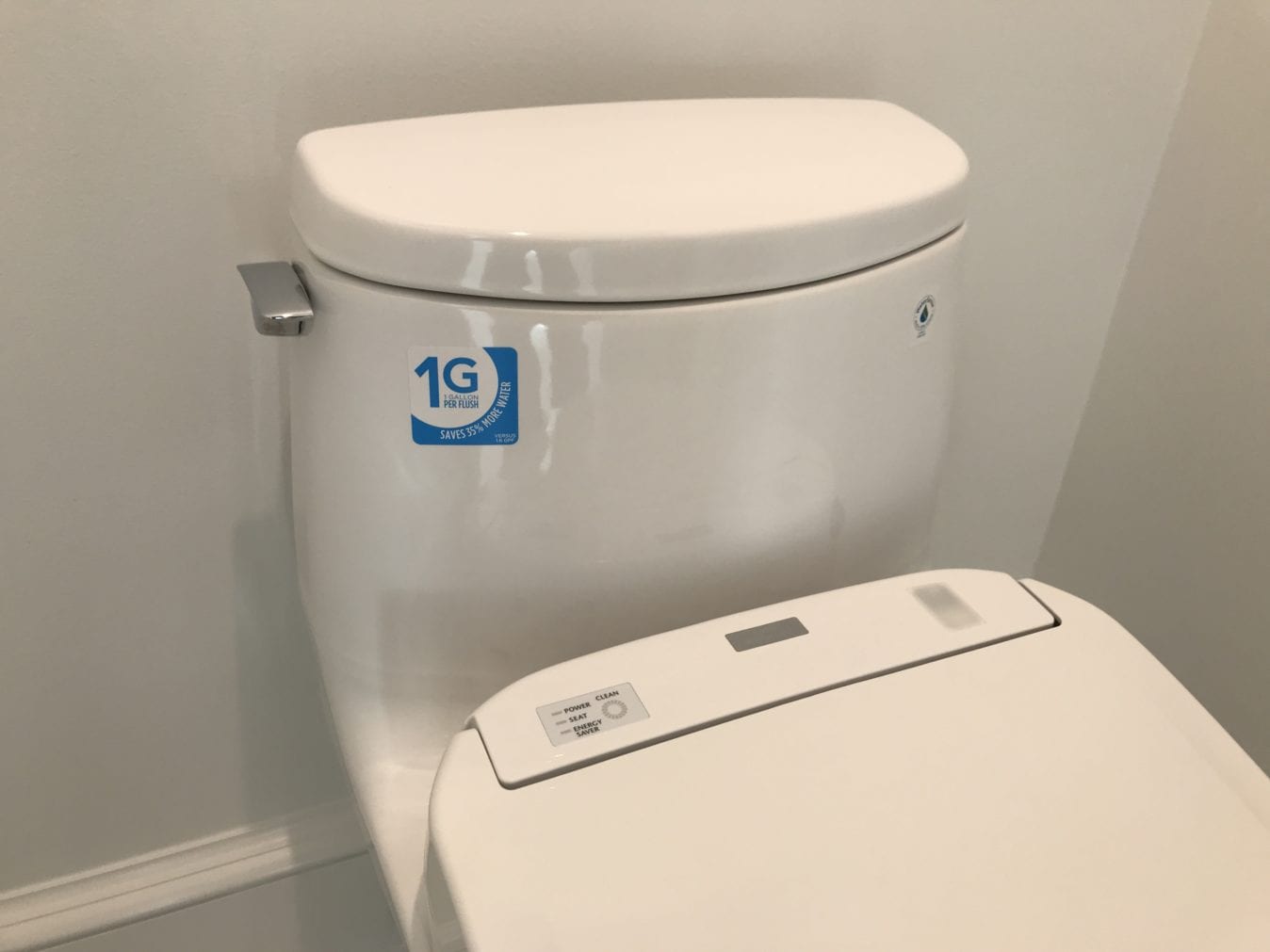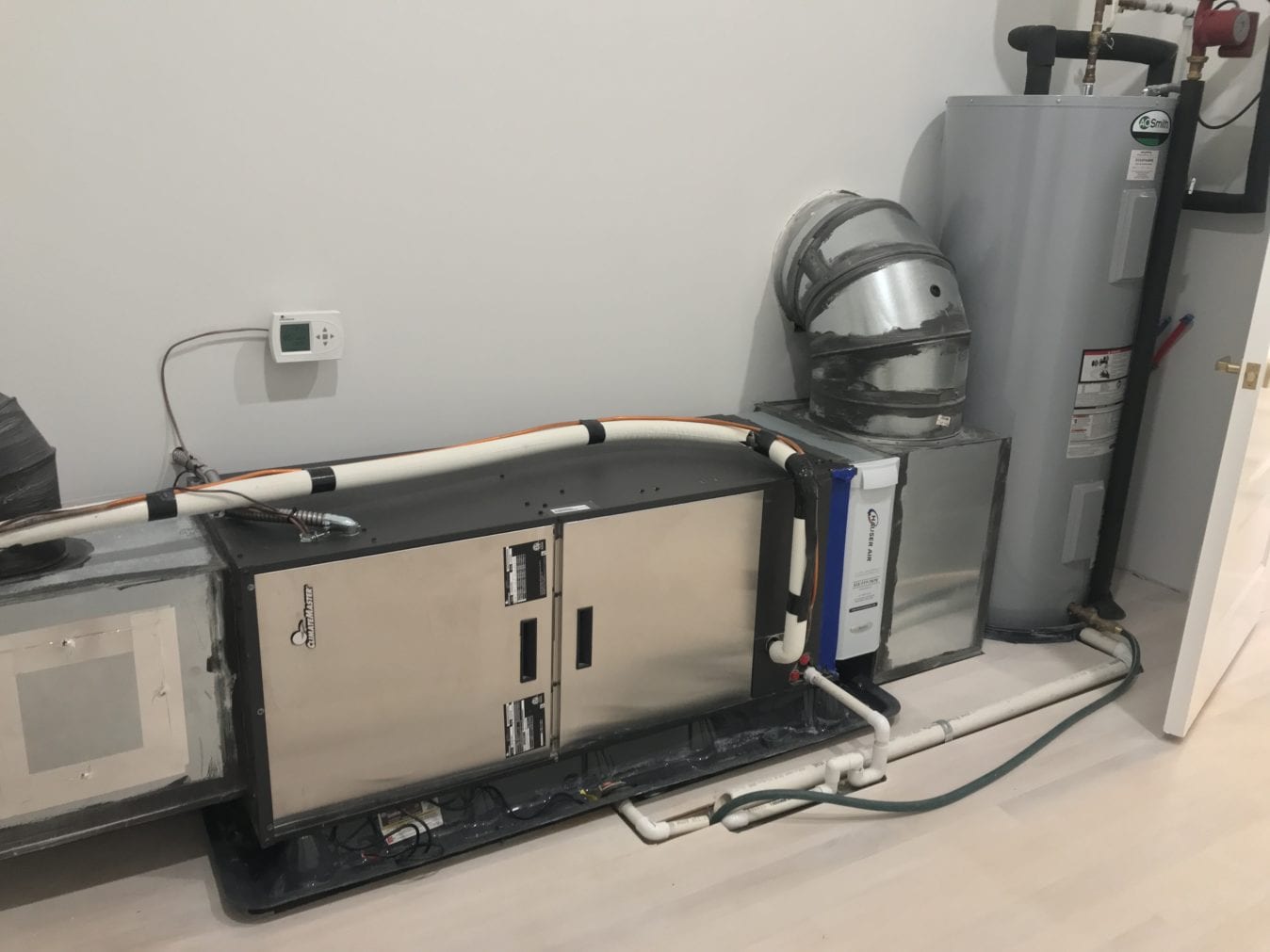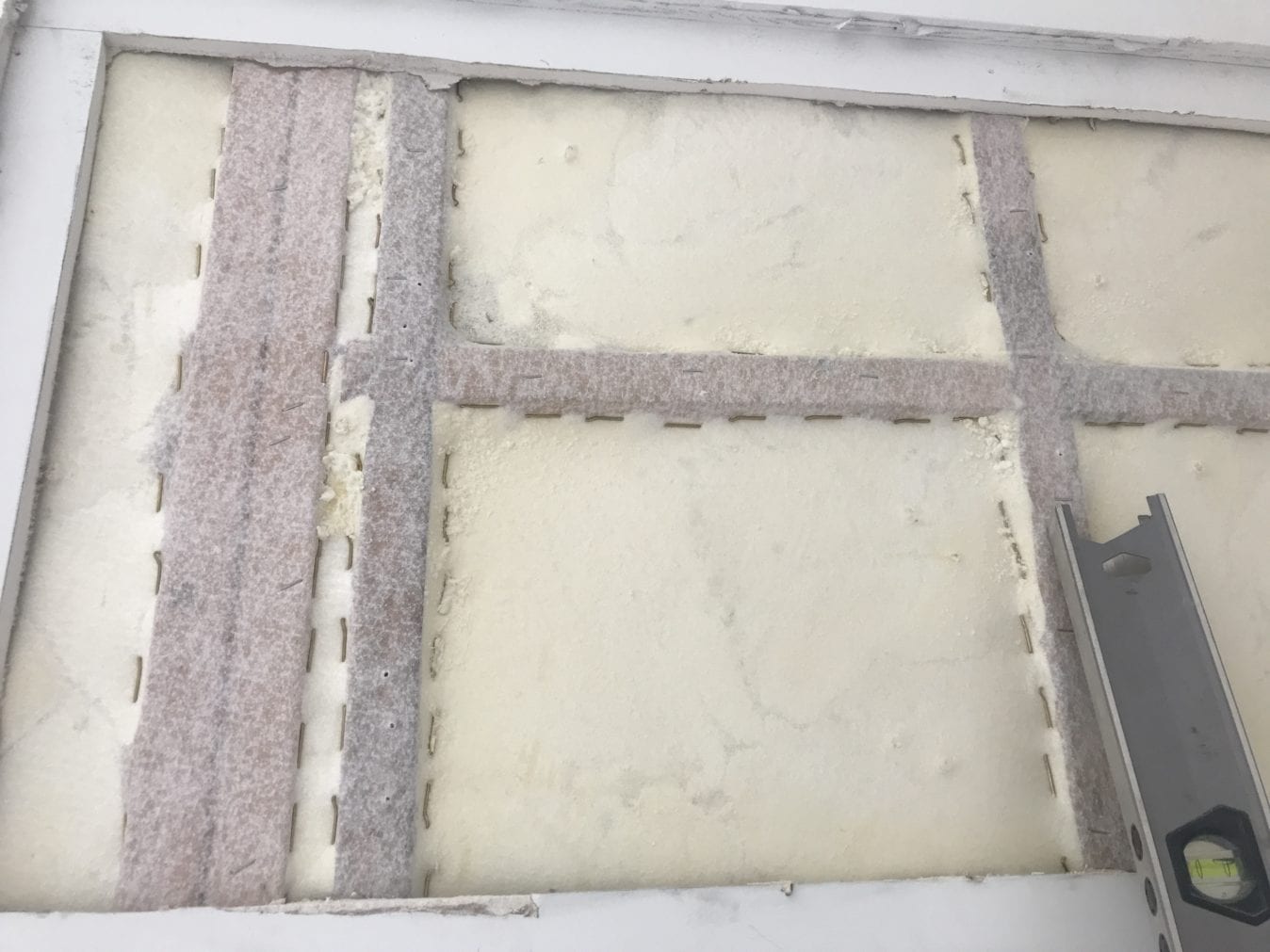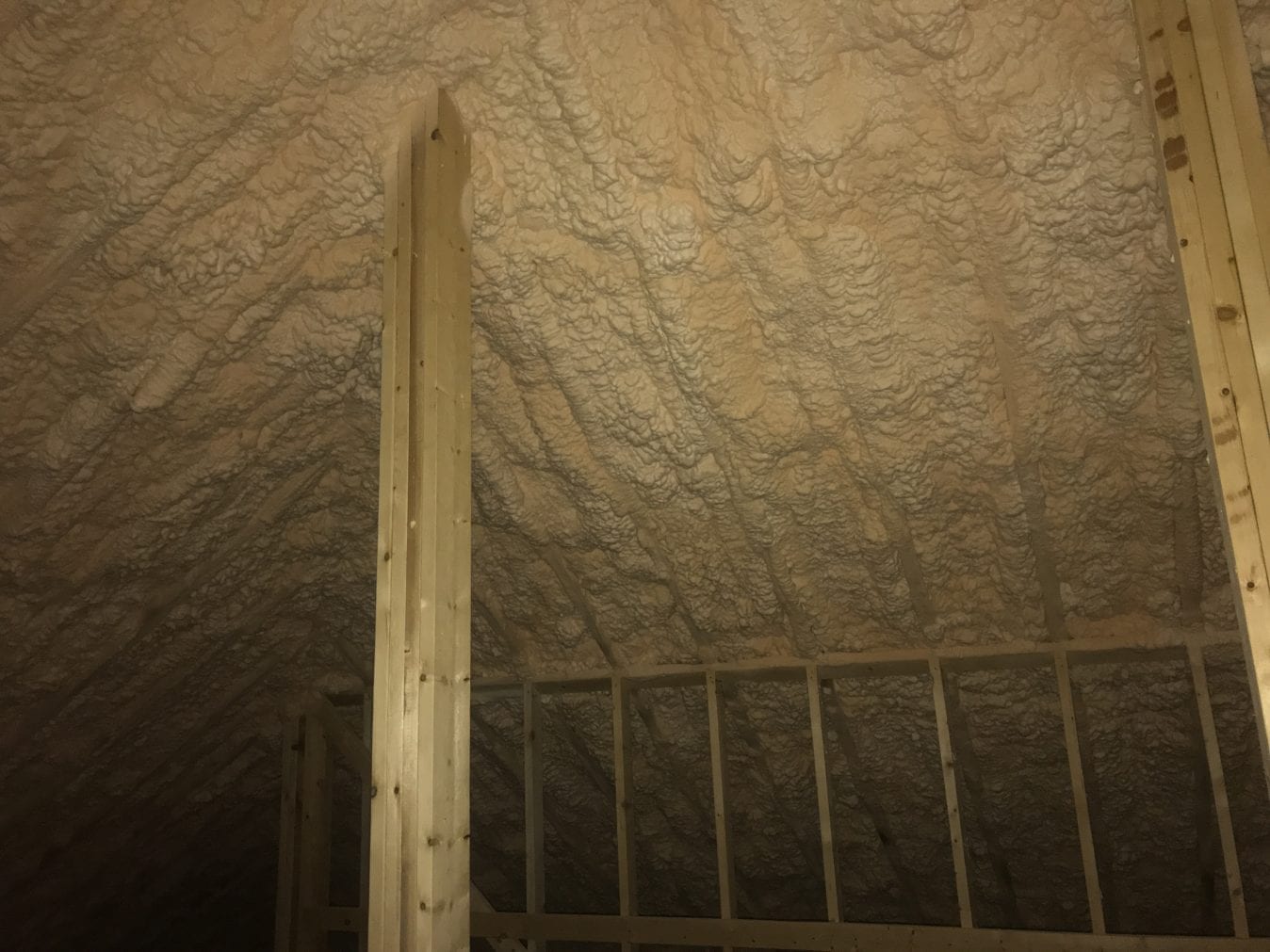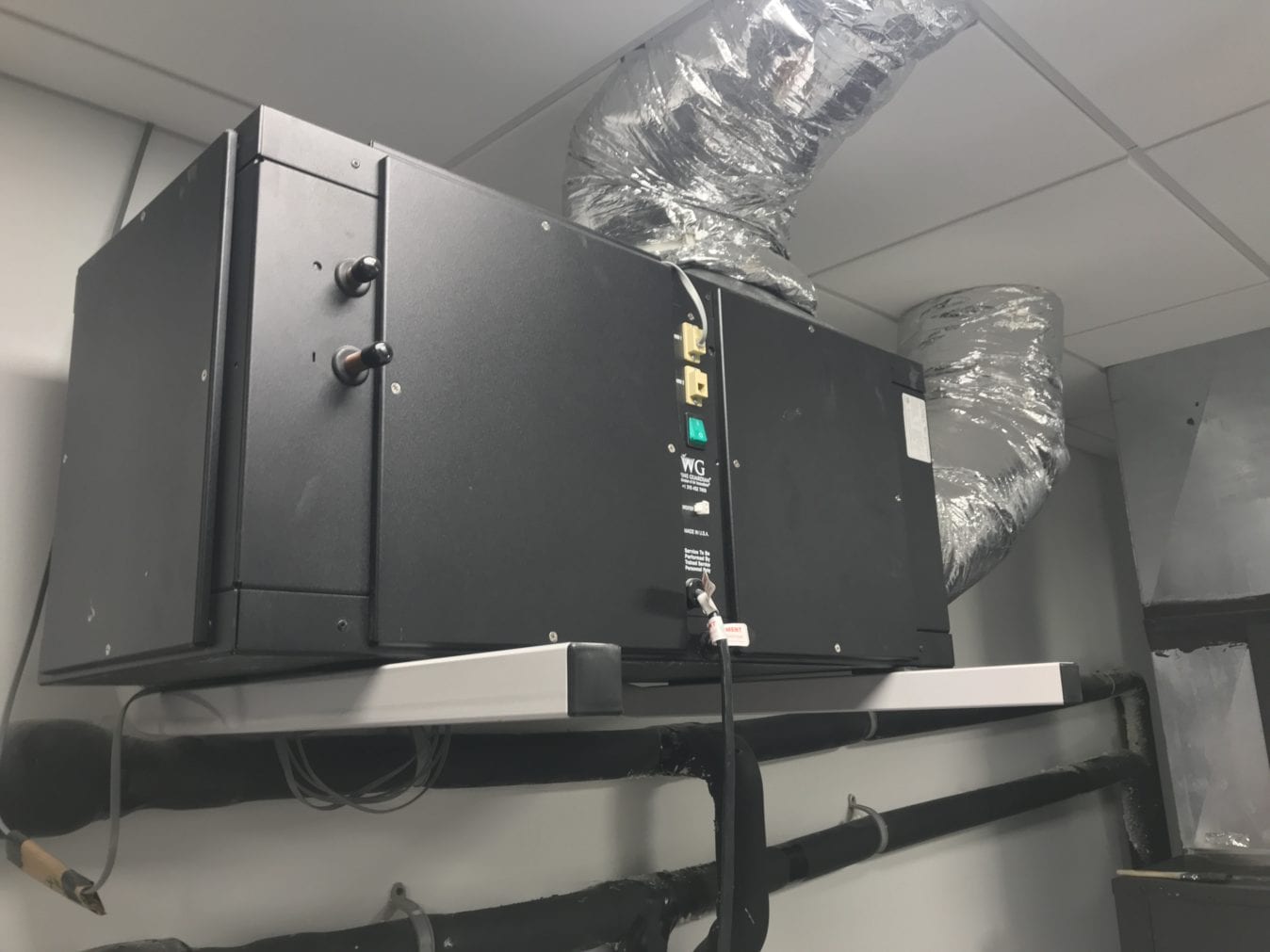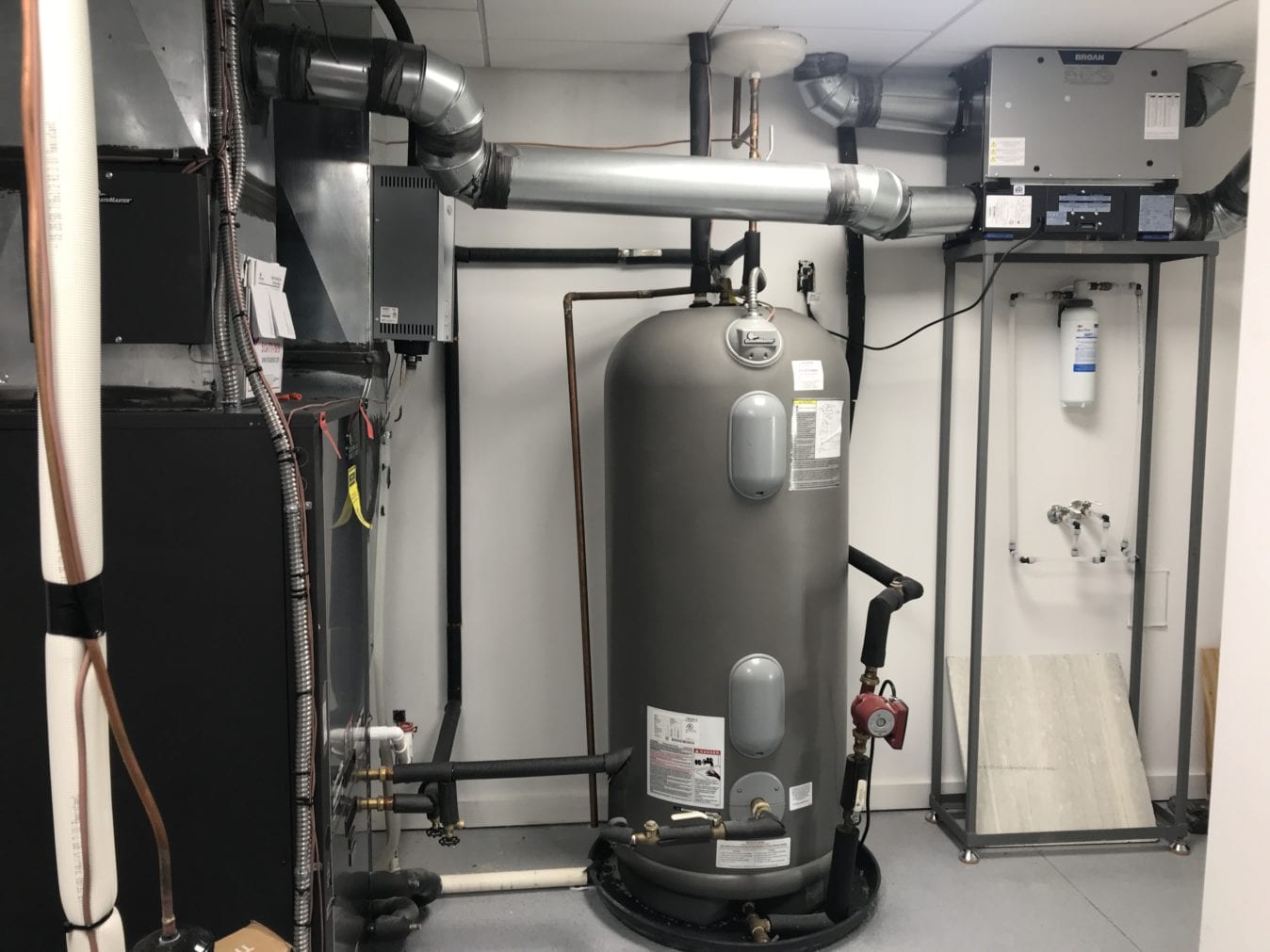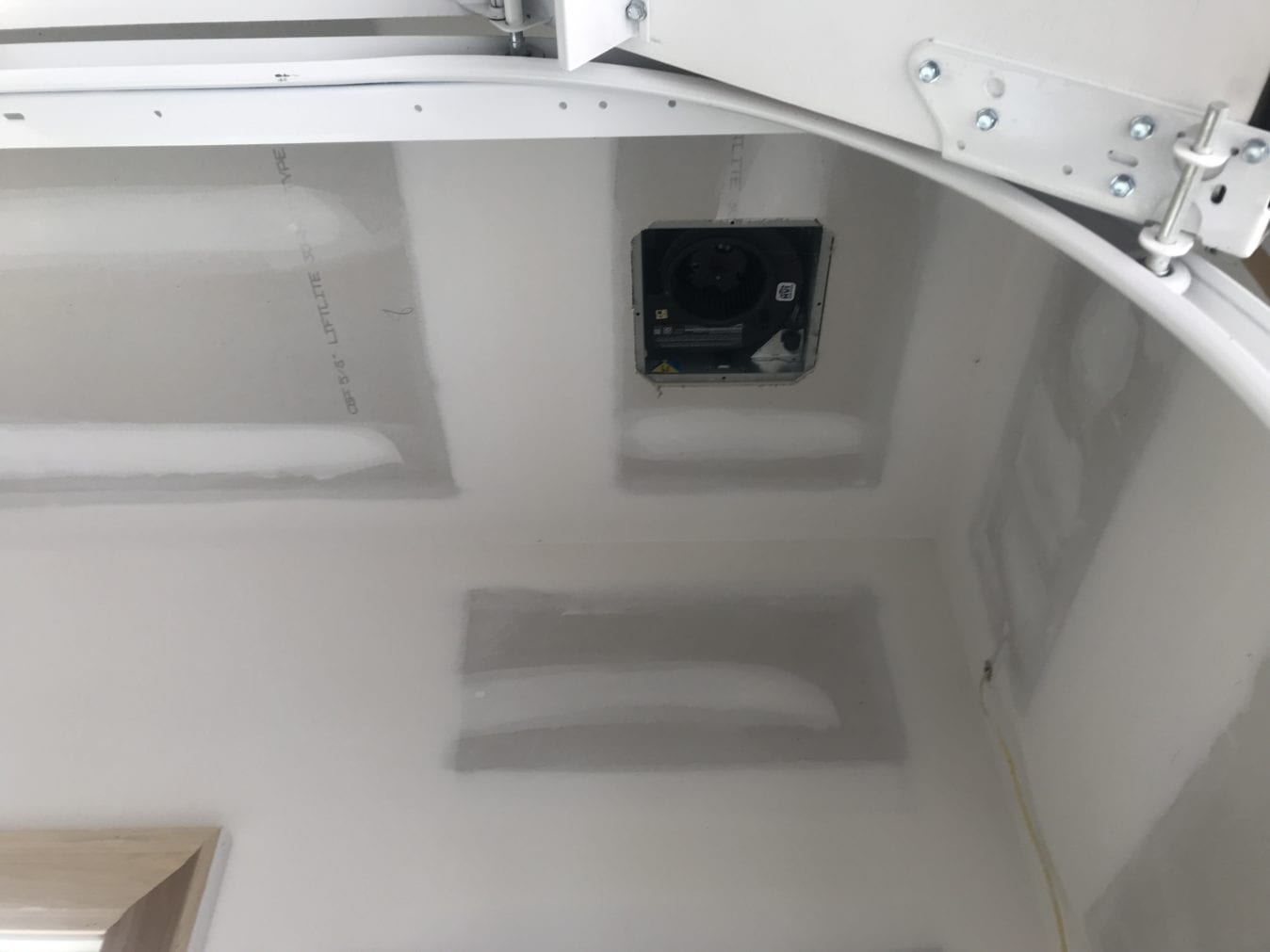This 8,900 square foot, seven bedroom home is 80 percent more energy efficient than a typical Cincinnati code built home.
The style of this residence may be traditional, but the approach to the design and construction was anything but conventional. In addition to fitting in with the historic nature of the neighborhood and meeting the owners’ functional requirements, budget, and aesthetic preferences, this home met the requirements for Platinum Certification for the LEED for Homes program in December 2020. In order to achieve this prestigious rating, a variety of strategies were employed, including three geothermal heating and cooling systems, 45 photovoltaic panels for a 19 kW array, insulation of R38 for the ceiling and R21 for the walls, cisterns for harvesting rainwater, energy efficient lighting and appliances, as well as locally sourced and manufactured materials.
Homes today can be designed to use less energy, consume less water, and interact with their natural environment. They can help recycle, are recyclable, incorporate renewable energies, and support a healthier indoor environment. All the while lessening their impact on the environment over the life of the building. None of these benefits collide with traditional home design and the modern conveniences expected. Along with the environmental benefits, there are long-term financial benefits such as lower operating costs and lower maintenance costs. Sustainable design is about building fiscally responsible buildings while limiting resource use.
John Isch is one of two principal partners of RWA Architects. His work on this project included knowing how to balance tradition with new solutions, and knowing the difference between impractical dreaming and creative solution-seeking. RWA actively seeks to make each project as environmentally sustainable as the goals allow. They seek opportunities for proper site orientation, natural lighting, indoor air quality, recycled content, and stormwater management. All while the homeowner may not even be aware, they are building a home with the highest qualifications for a Green Home.
The owner of the home is very private and that’s why we can’t show you more of one of most sustainable homes we have ever written about. They must be very proud of their vision and the example they are setting for the region. Congratulations on your incredible achievement!
Cincinnati History of Tax Abatements
Since 2002, the city of Cincinnati has granted 10-year tax abatement on structures. In 2007, the city added an additional five years to the tax abatement for those receiving LEED Silver Certification and higher. The current incentives are that owners must achieve LEED Certified and Visitable to receive a tax break on the first $275,000 of the structure’s value for an additional two years. An additional 5 years is available for LEED Silver $400,000, LEED Gold $562,000, and there is no maximum if you achieve LEED Platinum. Because of the tax abatement, nearly every new home in Cincinnati is LEED Certified and builders have become quite familiar with how to do it cost effectively.
LEED for Homes¬ Platinum Certification Level – Points Achieved Story
The LEED for Homes Rating System provides a basis for quantifying the benefits of green homes, thereby facilitating the widespread construction of more sustainable homes. One of the first steps in planning a LEED home is to adjust the certification thresholds based on the material and energy impacts. All else being equal, a large home consumes more materials and energy than a small home over its lifecycle. LEED compensates for these impacts by adjusting the thresholds for each award level. Thresholds for smaller-than-average homes are lowered, and thresholds for larger-than-average homes are raised. A home’s threshold for LEED Gold may be 72 points. A 4,500-sq.-ft. home with five bedrooms would be about 85 points.
In the end, the homeowner will have a well built and third-party certified home. Passing the blower door test alone is significant. Blower door tests are used to prove the air sealing quality of the construction. During the test the home is depressurized to -50 Pascal and measurements are recorded throughout the home to verify that outside air isn’t leaking into the home at a rate higher than required. It proves the home won’t be drafty and uncomfortable. Contrary to those builders who tell home owners that homes need to breathe for fresh air, it is much better to control the ventilation rather than allowing shoddy construction and leaky vapor barriers to supply fresh air to the home. This seven bedroom, 8,900 square foot home is expected to achieve LEED Platinum with at least 117.5 points.
The LEED Certification system is broadly categorized into eight parts that demonstrate measurable environmental benefits: Innovation & Design Process, Location & Linkages, Sustainable Sites, Water Efficiency, Energy & Atmosphere, Materials & Resources, and Indoor Environment Quality. The following is a review of the features of this home according to the LEED for Homes system.
Innovation and Design Process
• Integrated Project Planning
The Innovation and Design Process section of LEED includes Integrated Project Planning, which maximizes opportunities for integrated, cost-effective adoption of green design and construction strategies.
A Preliminary Rating is arrived at as early a practical, they conducted a preliminary LEED for Homes meeting, with the participation of the key members of the project team and Green Building Consultants (the LEED for Homes Certification Provider) to target the level of LEED, select credits and assign the parties accountable.
The Integrated Project Team typically includes holding regular meetings to review project status, introduce new team members to the project goals, discuss problems encountered, formulate solutions, review responsibilities and identify next steps. The Integrated Project Team is formed of individuals or organization with the necessary capabilities and various project phrases to maximize the opportunities for integrated, cost-effective adoption of green design and construction practices.
A big help with achieving 10 out of 11 possible credits for Innovation and Design Process is that John Isch was the Professional Credentialed with respect to LEED for Homes for this project.
• Quality Management for Durability
The Innovation and Design Process section also includes the Durability Management Process, which promotes durability of the high-performance building enclosure, its components and systems through appropriate design, materials selection, and construction practices. Prior to construction, the project team will identify risks, responses regarding pests, storm damage and moisture control measures.
The home’s plans include the following features: No paper-backed backer board or carpet in tub, shower and spa areas, no carpet within three feet of the entryway or kitchen, drain and drain pans for tank water heaters and clothes washers in or over living areas, and exhausting conventional clothes dryers directly to outdoors.
Durability Management requires that the builder have a quality management process in place to ensure installation. A third-party verified these durability conditions.
• Innovation or Regional Design
The home incorporates some significant additional green design and construction features with measurable environmental benefits. The project implemented trades training, advanced utility tracking, bicycle network & storage, and HVAC start-up credentialing.
• Site selection is a very important aspect of sustainable homes. This home isn’t in a floodplain or built within 100 feet of water or wetlands. The infill site with existing infrastructure didn’t replace prime farmland, parkland, unique soils or soils of state significance. It’s not a habitat for threatened or endangered species. Excavated topsoil was reused; runoff was controlled, so it didn’t contaminate storm water sewers or erode hillsides.
• Preferred Location guidelines encourage the building of LEED homes near or within existing communities. This project was an infill site, which means at least 75 percent of the perimeter immediately borders previously developed land.
• It uses Existing Infrastructure because it is within a half mile of existing water and sewer lines.
• Community Resources / Transit require it to locate close to basic resources such as arts and entertainment center, bank, convenient store, daycare, fire station, cleaner, library, pharmacy, places of worship and schools. This home achieved Outstanding Community Resources / transit because it is within one-half mile of 11, one-half mile of 125 transit rides available nearby per weekday.
• Access to open space
The highly desired urban location encourages walking, physical activity, and time spent outdoors. It’s located within ½ mile of a ¾ acre of a public open space.
Sustainable Sites
Although the focus of green building is typically on the built structures located on a site, the design of the site and its natural elements can have a significant environmental impact.
• Site Stewardship
Although the focus of green building is typically on the built structures located on a site, the design of the site and its natural elements can have a significant environmental impact. Site clearing and earth moving can contribute to considerable runoff, leading to soil erosion and alteration of natural drainage patterns both on and off-site. The home utilized Erosion Controls During Construction which included stockpiling and protecting topsoil from erosion, controlling the path and velocity of runoff with silt fencing or equivalent, protecting sewer inlets and streams with straw bales, silt fencing, etc. The project also provided swales to divert surface water from hillsides and used tiers, erosion blankets, compost blankets, etc. on sloped areas.
The Minimizing Disturbed Area of Site credit is granted to sites that are previously developed when they develop a tree and plant preservation plan with “no-disturbance zones; rehabilitate the lot, undo soil compaction and remove invasive plants like honeysuckle.
• Landscaping
The home’s landscaping included drought-tolerant turf, no turf in densely shaded areas, no turf on a 25 degree slope, adding mulch or soil amendments as appropriate, and all compacted soil was tilled to at least six inches.
Since the provision and distribution of potable water is costly and energy intensive, particularly during dry periods, a more sensible strategy is to design landscaping that requires less potable water. This is accomplished by managing some of the runoff from the roof with a cistern which reduced the overall irrigation demand buy 60 percent.
• Local Heat Island Effects
The home has a light-colored concrete and materials for the front driveway, patio and sidewalks with a solar reflectance index (SRI) of at least 29.
• Surface Water Management
The permeable lot has 70 percent vegetative landscape and 30 percent of the impermeable surfaces directed to infiltration features. They managed the runoff from the roof with a cistern on-site designed by professionals.
• Nontoxic Pest Control
The home integrated nontoxic pest control methods by keeping all exterior wood at least 12” above soil, and sealing external cracks, joints, etc. with caulking and installing pest-proof screens. There are no wood-to-concrete connections, or separate connections with dividers. The home used solid concrete foundation walls or pest-proof masonry wall design.
Water Efficiency
Water Efficiency is a very important category of LEED. It includes water reuse, which is demonstrated by a rainwater harvesting system, (including surface runoff and/or roof runoff) for landscape irrigation use. The storage tank is sized to hold all the water from a 1-inch rainfall event (equivalent to .62 gallons per square foot of roof area used for capture) or about 80 percent of roof rainwater. 50 percent of the roof area was harvested for outdoor use only.
The home includes a high-efficiency irrigation system including head-to-head coverage, central shut-off valve, submeter, pressure-regulating device, high-efficiency nozzles with distribution uniformity of at least 0.70, and a moisture sensor or rain delay controller so the system doesn’t turn on when it is raining or not needed because the soil is already hydrated. Overall the irrigation demand was reduced by 60 percent.
• Indoor water use
Very High-efficiency fixtures and fittings were specified for this home with an average flow rate is 1.5 gallons per minute for lavatory faucets, 1.75 gpm for shower stall, and 1.1 gallons per toilet flush.
Energy & Atmosphere
Data from the homebuilding industry indicate that roughly 1.5 million new homes are built each year and that the average size of new homes has doubled in the past 50 years. As a result, total U.S. fossil fuel use in homes has been steadily increasing. The average American consumes five times more energy than the average global citizen, ten times more than the average Chinese person, and nearly 20 times more than the average Indian. This home uses LED lights with a temperature od 2700 degrees Kelvin to match the traditional warm glow of incandescent light bulbs.
• Optimize Energy Performance
Exceptional energy performance measures improved the overall energy performance of the home by meeting or exceeding the performance of an Energy Star labeled home. A Home Energy Rating System (HERS) analysis verification of the energy efficiency of the home will be performed. They are required to exceed the Energy Star standard by reference to the Home Energy Rating System (HERS) analysis verification of the energy efficiency of the home. This home expects to achieve a HERS Index of 20 which will mean that it is is 80% more efficient than a typical home in Cincinnati.
• Hot Water Heating was made more efficient by the compact design of the conventional system.
• Residential refrigerant management required no ozone damaging HCFC refrigerants be used in the air conditioning system.
This home plans to receive 35 of 38 possible points for Energy & Atmosphere, truly an exceptional accomplishment.
Materials and Resources
The choice of building materials in important for sustainable homebuilding because of the extraction, processing, and transportation they require. Activities to produce building materials may pollute the air and water, destroy natural habitats and deplete natural resources. Construction and demolition wastes constitute about 40% of the total solid waste stream in the United States. This home’s slate roof really isn’t slate, it’s a recycled product made to look like slate by DeVinci Slate.
• Material-Efficient Framing includes detailed framing documents, detailed cut list and lumber order corresponding to framing plans or scopes. Framing efficiencies included precut framing packages and sizing headers for loads, ladder blocking and drywall clips. Off-site construction services are similar to a factory-built home in that the quality of construction may be higher because the shop isn’t subject to the weather and the possibility of less highly trained carpenters.
• Environmentally Preferable Products
If Forest Stewardship Certified, FSC, tropical wood was used, the country of manufacturer was requested for each wood product. A notice of preference for FSC products was provided to suppliers. No tropical wood was installed except for FSC-certified or reclaimed wood. A species is considered tropical if it is grown between the Tropics of Cancer and Capricorn.
The home’s material selections increased demand for environmentally preferable products and products or building components that are extracted, processed, and manufactured within the region. The products used included: Green Label Plus flooring; recycled gypsum board for interior walls and ceilings; low Volatile Organic Compounds, VOC, paint used on interior wall, ceiling, and millwork; Timbertek patio decking; True Style Doors; low VOC adhesives and sealants; and PEX water supply piping.
• Waste management
Waste management practices require projects to reduce waste generation to a level below the industry norm. Construction waste management planning investigated and documented local diversion and measured it, which resulted in diverting 64 percent from landfills.
Indoor Environmental Quality
Americans spend an average 90% of their time indoors, where levels of pollutants may run two to five times – and occasionally more than 100 times – higher than outdoors, according to the U.S. Environmental Protection Agency. Many of the pollutants found indoors can cause health reactions in the estimated 17 million Americans who suffer from asthma and 40 million who have allergies, contributing to millions of days absent from school and work.
Combustion venting
Indoor Environmental Quality requires combustion venting which limits the leakage of combustion gases into the occupied space of the home. Indoor environmental quality included no unvented combustion appliances and carbon monoxide detectors on each floor. Masonry wood-burning fireplaces feature masonry heater and back-draft potential test. There are no space/water-heating equipment with combustion. This home’s natural gas stove is listed, is either power- or direct-vented and has an electric pilot light.
• Moisture control
Controlling indoor moisture levels to provide comfort, reduce risk of mold and increase the durability of the home is part of the moisture load control. They installed dehumidification equipment capable of maintaining humidity at or below 60 percent. They meet ASHRAE Standards and only exhaust air to the outdoors, not the attic or interstitial spaces.
• Outdoor Air Ventilation
The home reduces occupant exposure to indoor pollutants by ventilating with outdoor air. The home also included a heat recovery system, which recovers the heating or cooling depending on the season from the home’s exhaust air. Third-party performance testing was performed to verify proper installation.
• Local exhaust
LEED Homes reduce moisture and exposure to indoor pollutants in kitchens and bathrooms by meeting ASHRAE Standards and only exhaust air to the outdoors, not the attic or interstitial spaces. Enhanced local exhaust uses occupancy sensors, automatic humidistat controller, and automatic timer or continuous fan. It included third-party performance testing. Prerequisites included bathroom and kitchen exhausts; and fans and ducts meeting ASHRAE Standard 62.2 airflow requirements, air is exhausted to outdoors, It also as an Energy Star labeled bathroom exhaust. Enhanced local exhaust features include an automatic humidistat controller, and a continuously operating exhaust fan.
• Distribution of space heating and cooling
There is appropriate distribution of HVAC in the home to improve thermal comfort and energy performance. Room-by-room load calculations ensured ducts are designed accordingly. A typical home which has improved the distribution of space heating and cooling includes a limited pressure differential between closed room and adjacent spaces, and supply airflow rates in each room were tested and confirmed.
• Air filtering – Very high performance, MERV 13, filters were installed.
• Contaminant control
Indoor contaminants were controlled during construction, and the design allows for contaminant control, which includes space for shoe removal and storage near the primary entryway. A central vacuum system was installed with exhaust to outdoors
• Radon protection- Radon testing was done, and controls put into place if needed.
• Garage pollutant protection
The home has no HVAC in the garage to minimize pollutants from the garage. The attached garage penetrations and floor and ceiling joists connections are sealed to prevent pollutants from getting into the home and includes an exhaust fan with an automated timer control. All the doors are weather-stripped, all penetrations and cracks at the base of walls were sealed. Carbon monoxide detectors were installed in rooms that share a door with the garage.
• Awareness and Education
Some homebuyers may know very little about green home construction. They may be unaware of the green features in the home, or they may be unfamiliar with how to use and maintain them. Without adequate training, the full benefits of the LEED measures likely will not be achieved.
Education of the homeowner or tenant
These homeowners will receive an operator and training manual as well as a one-hour walkthrough. They’ll also receive the LEED checklists and forms, manufacturer’s manuals and cleaning and maintenance guidance.
Awareness and education requirements include this article as part of the LEED Certification. It will be published online at Green Cincinnati Education Advocacy and the local USGBC’s Chapter site once certified. LEED signage was posted on the site. The posts will be picked up by newspapers and the media. The owners displayed LEED Signage on the exterior of the home while being built and after completed.
USGBC makes no warranty with respect to any LEED certified project, including any warranty of habitability, merchantability, or fitness for a particular purpose. There are no warranties,
express or implied, written or oral, statutory or otherwise, with respect to the certifications provided by USGBC. By way of example only, and without limiting the broad scope of the
foregoing, it is understood that LEED certification, whether at the Certified level or any other level, does not mean that the project is structurally sound or safe, constructed in accordance
with applicable laws, regulations or codes, free of mold or mildew, free of volatile organic compounds or allergens, or free of soil gases including radon.
If you are interested in the architect, rater and builder of this LEED home, contact:
John Isch, AIA
RWA Architects, Inc.
2771 Observatory Ave.
Cincinnati, OH 45208
Phone: 513-321-9506
www.rwaarchitects.com
Email: [email protected]
Sanyog Rathod
Sol design + consulting
501 e 13th Street
Cincinnati, OH 45202
513-939-8400
www.solconsults.com
Email: [email protected]
Jeff Barnes
Cedar Hill Custom Homes
101 Harbor Green Dr., #605
Bellevue, KY 41073
513-509-1506
www.cedarhillcustomhomes.com
Email: [email protected]
If you would like to tour some LEED homes in Cincinnati, we suggest you join the local USGBC Chapter and attend their home tours and meetings.
https://www.usgbc.org/chapters/usgbc-ohio
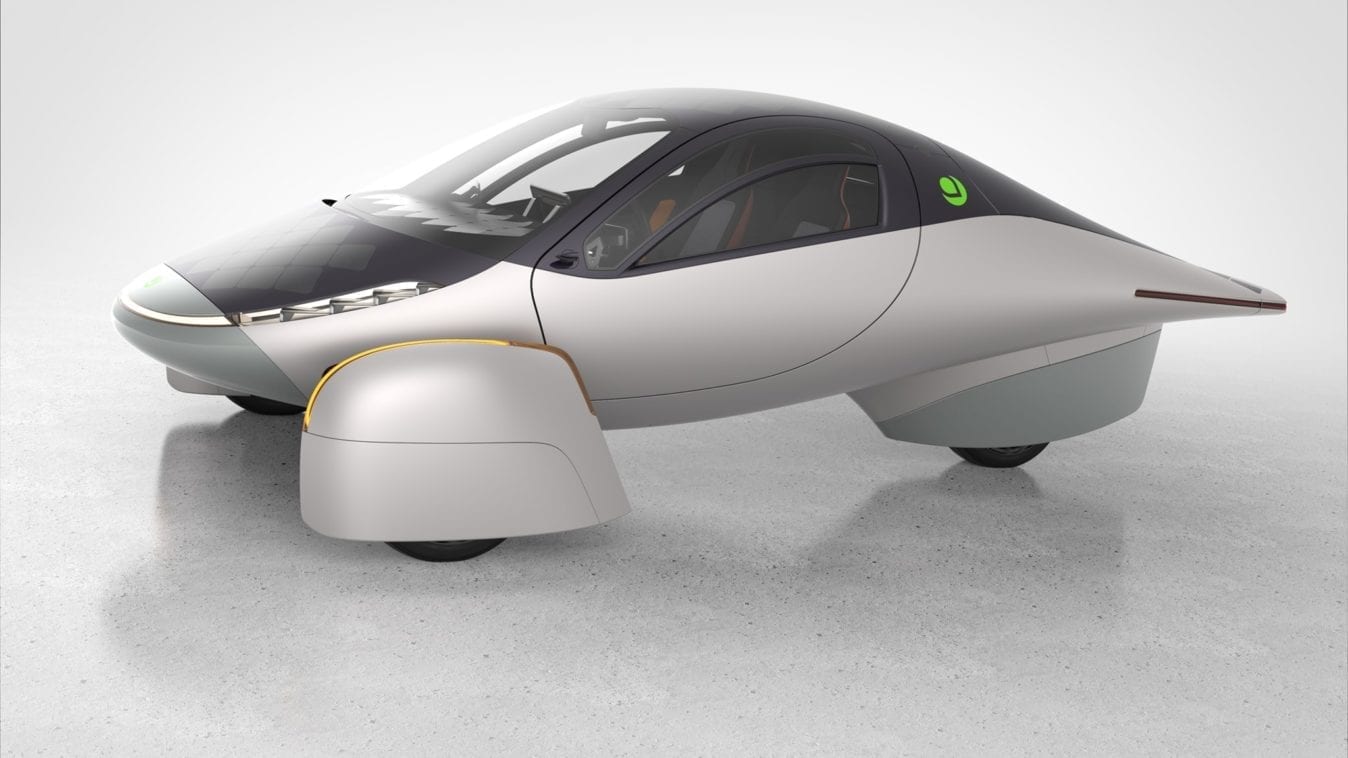
Get $30 off your Aptera Pre-Order
Click this link and you’ll receive a promo code for $30 off an Aptera pre-order. The 2nd Generation Aptera launched Dec. 4, 2020 and is on track to be the first self charging electric vehicle. The two-person, three-wheeler is covered with solar panels which allow self-charging but it also comes with a plug for charging. For every person I refer, I’ll earn a $1,000 credit towards an Aptera. After referring 26 people, I’ll score a free standard edition model. I’m a volunteer Aptera Ambassador, read more about this incredible solution to beautiful design and the ultimate in sustainability! Thanks for your referral, Chuck Lohre, Editor, Green Cincinnati Education Advocacy. #aptera #apteramotors

